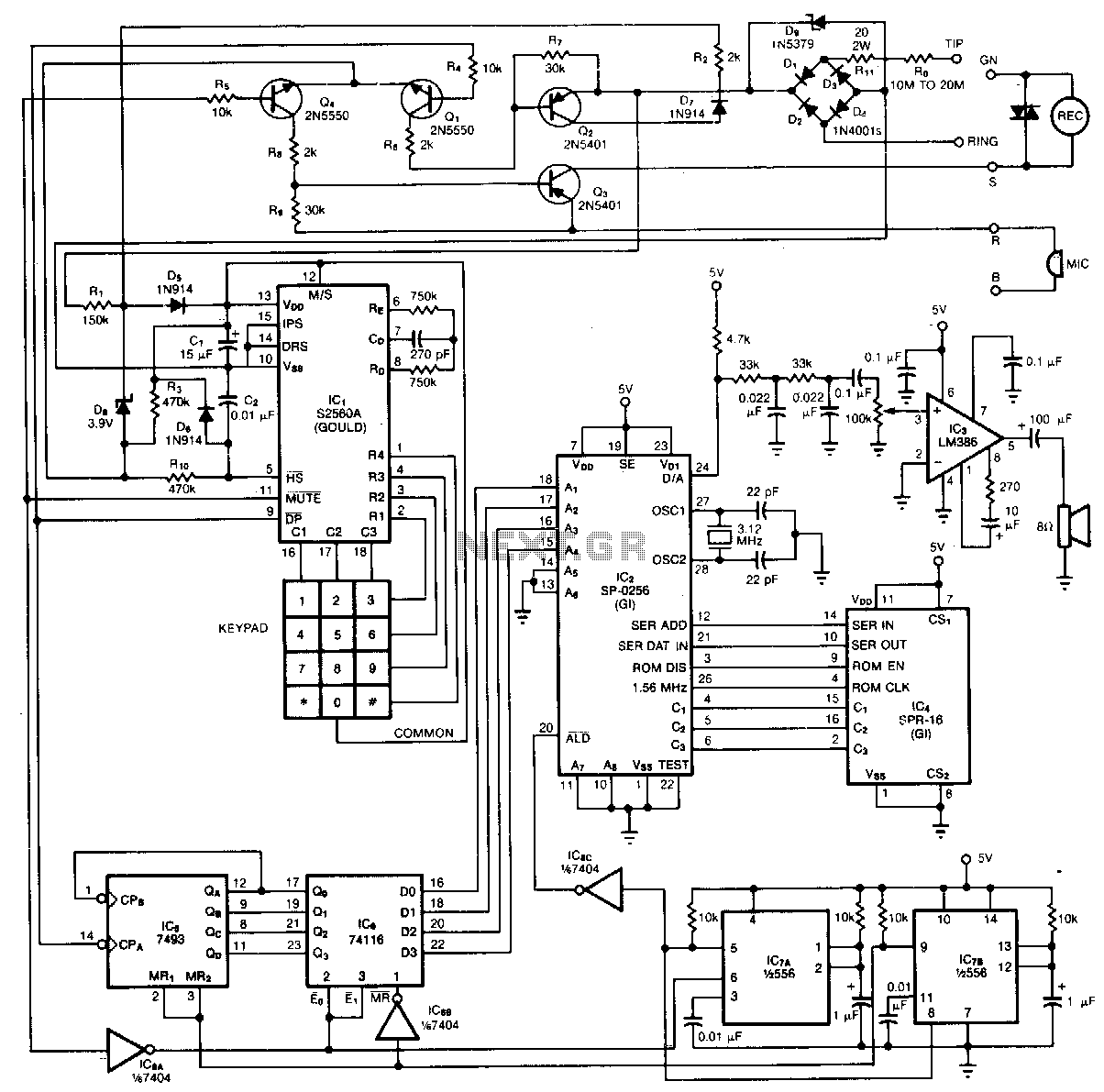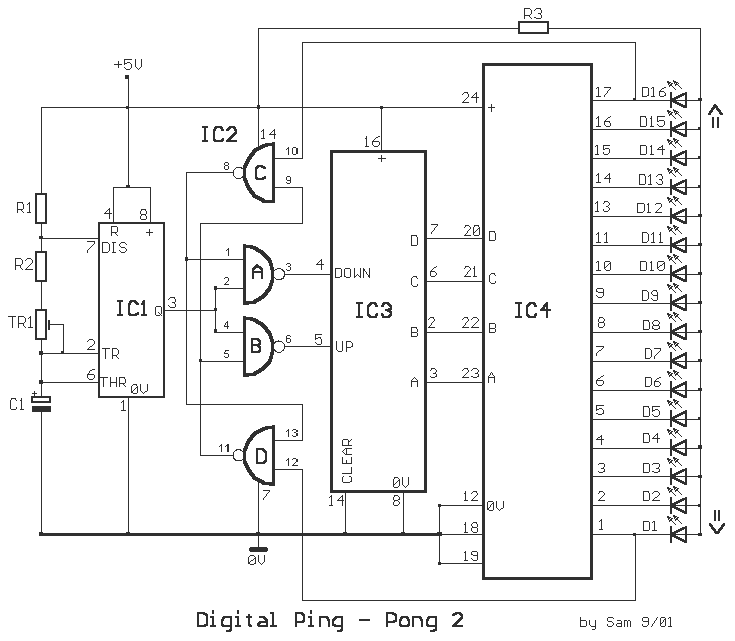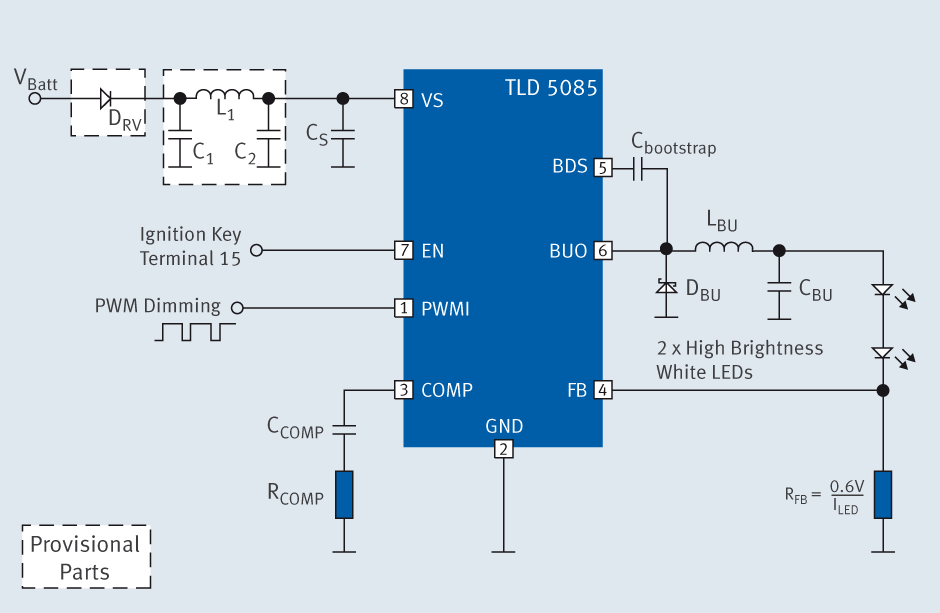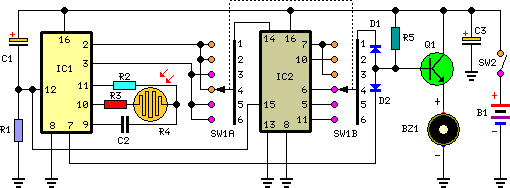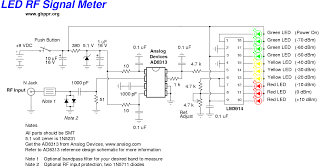
LED Countdown Timer with AT89C2051
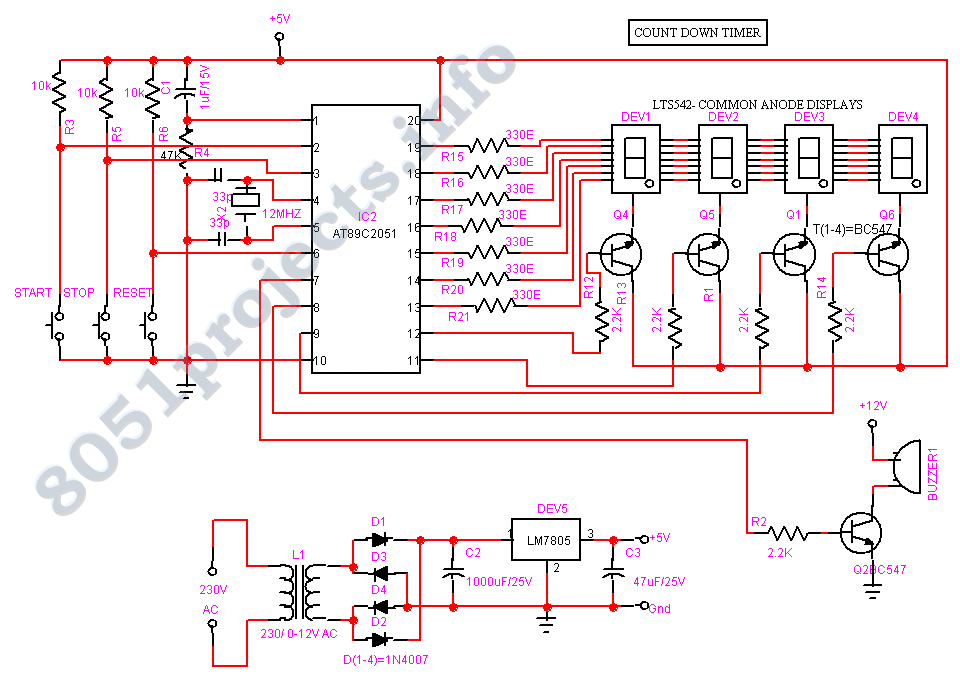
A simple count-down LED timer that counts in minutes and seconds. Three buttons below the LED provide control of the unit, allowing you set the desired countdown time in minutes and seconds and a start/stop button. Completion of the countdown is indicated by an alarm that starts when the countdown has finished and the display reads zero. The alarm is stopped by pressing the start/stop button. Counts down from up to 99 minutes 59 seconds. Loud buzzer.
The countdown LED timer circuit is designed to provide a user-friendly interface for timing applications, suitable for various tasks such as cooking, exercise, or any activity requiring time management. The core of the timer is based on a microcontroller, which handles the countdown logic and user input.
The circuit includes three push-button switches: one for setting the minutes, one for setting the seconds, and a start/stop button. The minute and second buttons are connected to the microcontroller's GPIO (General Purpose Input/Output) pins, allowing the user to increment the respective values. A display unit, typically a 7-segment LED display or an LCD, is used to visually indicate the remaining time in a clear format.
The microcontroller is programmed to count down from a maximum of 99 minutes and 59 seconds. The countdown process is initiated by pressing the start button, which triggers the microcontroller to begin decrementing the time at one-second intervals. An internal timer or clock function within the microcontroller ensures accurate timing.
When the countdown reaches zero, the microcontroller activates a loud buzzer, providing an audible alert to signal the end of the countdown. The buzzer is typically a piezoelectric type, known for its loud sound output, making it effective for alerting users in noisy environments. The alarm can be silenced by pressing the start/stop button, which also serves to halt the countdown if pressed during the timing process.
Power for the circuit is usually supplied by batteries or an external power source, ensuring portability and ease of use. Additional components may include a resistor for current limiting on the LED display and capacitors for power stabilization. The circuit should also incorporate debouncing logic for the push buttons to prevent false triggering due to mechanical noise.
Overall, the simple count-down LED timer circuit is a practical solution for time management, combining ease of use with effective timing capabilities.A simple count-down LED timer that counts in minutes and seconds. Three buttons below the LED provide control of the unit, allowing you set the desired countdown time in minutes and seconds and a start/stop button. Completion of the countdown is indicated by an alarm that starts when the countdown has finished and the display reads zero.
The alarm is stopped by pressing the start/stop button. Counts down from up to 99 minutes 59 seconds Loud buzzer 🔗 External reference
The countdown LED timer circuit is designed to provide a user-friendly interface for timing applications, suitable for various tasks such as cooking, exercise, or any activity requiring time management. The core of the timer is based on a microcontroller, which handles the countdown logic and user input.
The circuit includes three push-button switches: one for setting the minutes, one for setting the seconds, and a start/stop button. The minute and second buttons are connected to the microcontroller's GPIO (General Purpose Input/Output) pins, allowing the user to increment the respective values. A display unit, typically a 7-segment LED display or an LCD, is used to visually indicate the remaining time in a clear format.
The microcontroller is programmed to count down from a maximum of 99 minutes and 59 seconds. The countdown process is initiated by pressing the start button, which triggers the microcontroller to begin decrementing the time at one-second intervals. An internal timer or clock function within the microcontroller ensures accurate timing.
When the countdown reaches zero, the microcontroller activates a loud buzzer, providing an audible alert to signal the end of the countdown. The buzzer is typically a piezoelectric type, known for its loud sound output, making it effective for alerting users in noisy environments. The alarm can be silenced by pressing the start/stop button, which also serves to halt the countdown if pressed during the timing process.
Power for the circuit is usually supplied by batteries or an external power source, ensuring portability and ease of use. Additional components may include a resistor for current limiting on the LED display and capacitors for power stabilization. The circuit should also incorporate debouncing logic for the push buttons to prevent false triggering due to mechanical noise.
Overall, the simple count-down LED timer circuit is a practical solution for time management, combining ease of use with effective timing capabilities.A simple count-down LED timer that counts in minutes and seconds. Three buttons below the LED provide control of the unit, allowing you set the desired countdown time in minutes and seconds and a start/stop button. Completion of the countdown is indicated by an alarm that starts when the countdown has finished and the display reads zero.
The alarm is stopped by pressing the start/stop button. Counts down from up to 99 minutes 59 seconds Loud buzzer 🔗 External reference
